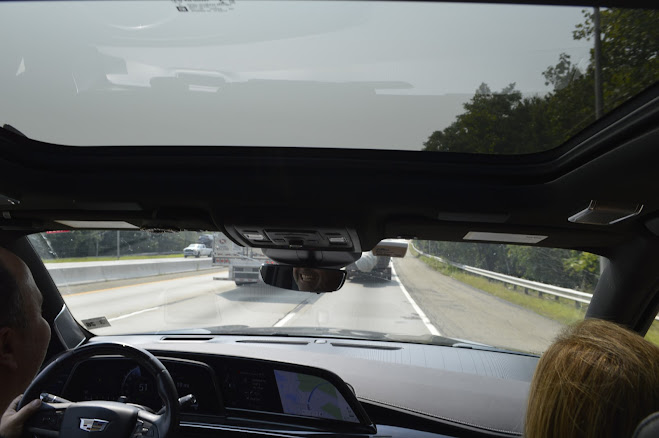di Salvatore D'Agostino
Domani si torna a casa, e mentre mi trovo in questo enorme parcheggio di un centro commerciale, mi viene in mente la storia dell'architetto Victor Gruen di origine austriaca che si trasferì negli USA nel 1938, fuggendo dalla tragedia imminente causata dai populismi in Europa. Si deve a lui l'idea del centro commerciale come lo conosciamo oggi. Victor Gruen costruì, il Southdale Center, a Edina, Minnesota, nel 1956, il primo centro commerciale moderno al mondo.
Gruen era un socialista di stampo europeo; trovava i negozi sparsi nei centri cittadini inefficienti, e lo stile di vita suburbano dell'America degli anni '50 troppo "incentrato sulle auto". Voleva progettare un edificio che fosse un luogo di incontro comunitario, dove le persone potessero fare shopping, bere un caffè e socializzare, come ricordava dalla sua Vienna natia. Il Southdale Center era vagamente ispirato ai portici delle città europee densamente popolate e includeva "vetrine all'altezza degli occhi" per attirare i clienti nei negozi. Gruen immaginava un centro che avrebbe incluso "un centro medico, scuole e residenze," non solo una serie di negozi sfarzosi. Lo descriveva come un luogo che avrebbe potuto "soddisfare le esigenze odierne e della vita odierna" e unire la comunità, offrendo "un nuovo spazio per l'istinto umano primario di mescolarsi con gli altri."
E mentre penso a questo, mi rendo conto che l'Europa, a distanza di qualche decennio, trovò geniale questa soluzione e la importò. Ma in questo ritorno al punto di partenza si è creato un corto circuito: l'idea originale di Gruen, nata in Europa e portata negli USA, torna indietro come un surrogato, perdendo quel paradosso iniziale che Gruen aveva voluto.
Domani torno a casa, e con me porto questa lezione importante.
Tomorrow, I’m heading home, and while I stand in this huge parking lot of a shopping mall, I’m reminded of the story of architect Victor Gruen, an Austrian who moved to the USA in 1938, fleeing the looming tragedy caused by populism in Europe. He is credited with the idea of the shopping mall as we know it today. Victor Gruen built the Southdale Center in Edina, Minnesota, in 1956, the first modern shopping mall in the world.
Gruen was a European-style socialist; he found scattered shops in city centers inefficient, and the suburban lifestyle of 1950s America too "car-centered." He wanted to design a building that would be a community gathering place, where people could shop, grab a coffee, and socialize, much like he remembered from his native Vienna. The Southdale Center was loosely inspired by the arcades of densely populated European cities and featured "eye-level windows" to attract customers into the stores.
Gruen envisioned a center that would include "a medical center, schools, and residences," not just a series of flashy shops. He described it as a place that could "meet the needs of today’s life and society" and unite the community, offering "a new space for the primal human instinct to mingle with others."
And as I think about this, I realize that Europe, decades later, found this solution brilliant and imported it. But in this return to the starting point, a short circuit occurred: Gruen's original idea, born in Europe and taken to the USA, came back as a surrogate, losing the initial paradox that Gruen had intended.
Tomorrow I go home, and I carry this important lesson with me.









